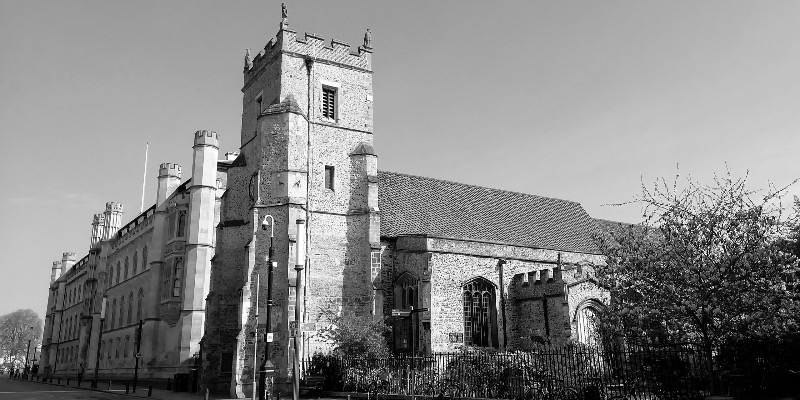St Botolph's heritage

St Botolph's stands on the site of an earlier church which stood at the ancient Trumpington Gate of the city. A Norman church stood on this site, and perhaps also a Saxon church before it. The Nave and Aisles of the present church were built in the early fourteenth century, about 1320.
The following century saw the construction of the Tower, crowned with carved symbols of the Four Evangelists (restored in 1971), the magnificent arch beneath the tower at the west end of the Nave, the South Chapel and the South Porch, and the carved Rood Screen between the Nave and the Chancel. This is the only medieval Rood Screen remaining in the ancient parish churches of Cambridge. The four bells were cast in the fifteenth century by the London bell-founder, John Danyell, and have never been altered since.
The seventeenth century is represented by the monument in the South Chapel to Thomas Plaifere, a noted preacher and Latinist, who died in 1609, and the elegant octagonal wooden canopy (1637) over the medieval font near the west door.
The Chancel was rebuilt in 1872. It was designed by G.F. Bodley and worked on by local artists G.R. Leach and G Gray. This outstanding example of high Victorian decoration was conserved and restored in 2009 with grants including one from the Heritage Lottery Fund.
The north window in the Chancel is a memorial to Dr Campion (died 1896), Rector from 1862 to 1892, and President of Queens' College. It shows St Botolph between St Bernard and St Margaret, the two patron saints of Queens'.
The South Chapel was refurbished in the 1920s as a memorial to the 1914-1918 World War. Of particular interest is the window of St George and St Michael, by Rachel Tancock, a noted Arts and Crafts stained glass artist.
There is a memorial stone to the Darwin family near the vestry door, who were parishioners of St Botolph's.